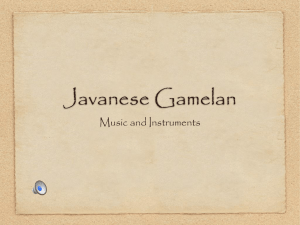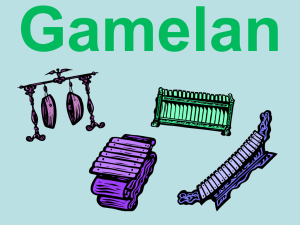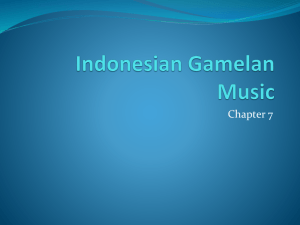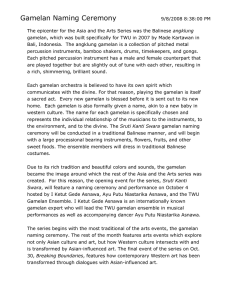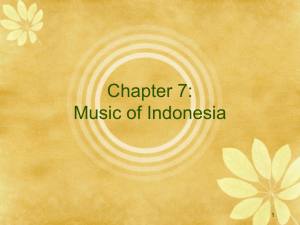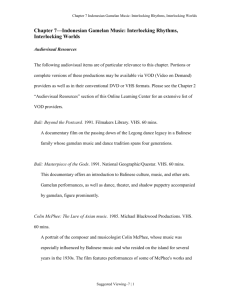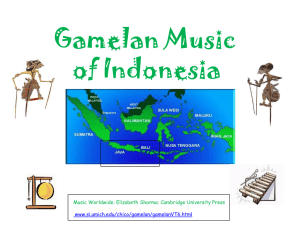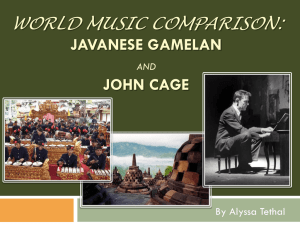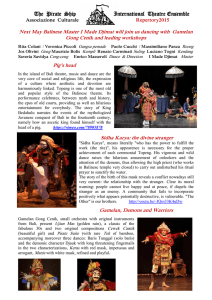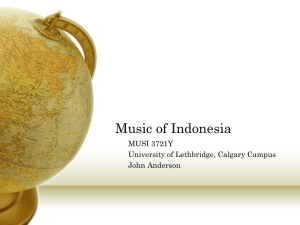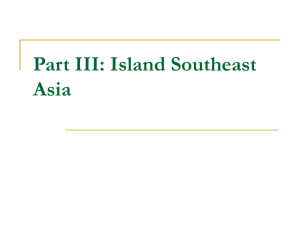Indonesian Music: Gamelan Study Guide
advertisement
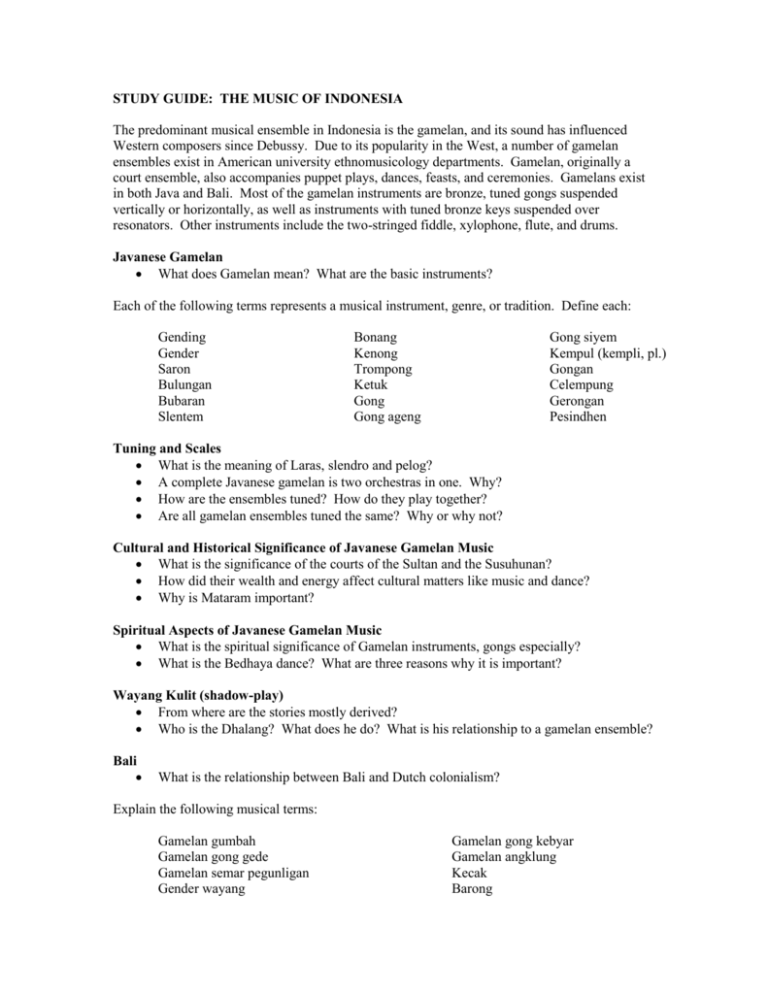
STUDY GUIDE: THE MUSIC OF INDONESIA The predominant musical ensemble in Indonesia is the gamelan, and its sound has influenced Western composers since Debussy. Due to its popularity in the West, a number of gamelan ensembles exist in American university ethnomusicology departments. Gamelan, originally a court ensemble, also accompanies puppet plays, dances, feasts, and ceremonies. Gamelans exist in both Java and Bali. Most of the gamelan instruments are bronze, tuned gongs suspended vertically or horizontally, as well as instruments with tuned bronze keys suspended over resonators. Other instruments include the two-stringed fiddle, xylophone, flute, and drums. Javanese Gamelan What does Gamelan mean? What are the basic instruments? Each of the following terms represents a musical instrument, genre, or tradition. Define each: Gending Gender Saron Bulungan Bubaran Slentem Bonang Kenong Trompong Ketuk Gong Gong ageng Gong siyem Kempul (kempli, pl.) Gongan Celempung Gerongan Pesindhen Tuning and Scales What is the meaning of Laras, slendro and pelog? A complete Javanese gamelan is two orchestras in one. Why? How are the ensembles tuned? How do they play together? Are all gamelan ensembles tuned the same? Why or why not? Cultural and Historical Significance of Javanese Gamelan Music What is the significance of the courts of the Sultan and the Susuhunan? How did their wealth and energy affect cultural matters like music and dance? Why is Mataram important? Spiritual Aspects of Javanese Gamelan Music What is the spiritual significance of Gamelan instruments, gongs especially? What is the Bedhaya dance? What are three reasons why it is important? Wayang Kulit (shadow-play) From where are the stories mostly derived? Who is the Dhalang? What does he do? What is his relationship to a gamelan ensemble? Bali What is the relationship between Bali and Dutch colonialism? Explain the following musical terms: Gamelan gumbah Gamelan gong gede Gamelan semar pegunligan Gender wayang Gamelan gong kebyar Gamelan angklung Kecak Barong Popular Music in Java Define the following: Gambus, Dangdut, Kroncong, and Jaipongan. Deeper Questions How have Western composers such as Claude Debussy and Colin McPhee utilized Indonesian music, particularly scales, in their compositions? What caused the divergences of Javanese and Balinese music in the fifteenth-century, and then in the twentieth-century? Why can Indonesia be labeled a “bronze culture”? What other cultures can we list that are influenced by a material as bronze to Indonesia? In what other world music cultures might we find interlocking? Where might we find Western, African, Asian, Native America or folk European equivalents to Balinese musical instruments that contain spirits? How may shadow play be compared to opera or ballet? What acculturations has Balinese music made in the twentieth-century, and how/why was it beneficial? What were the forces that created Arabic and then Portuguese influences on Indonesian popular music?
